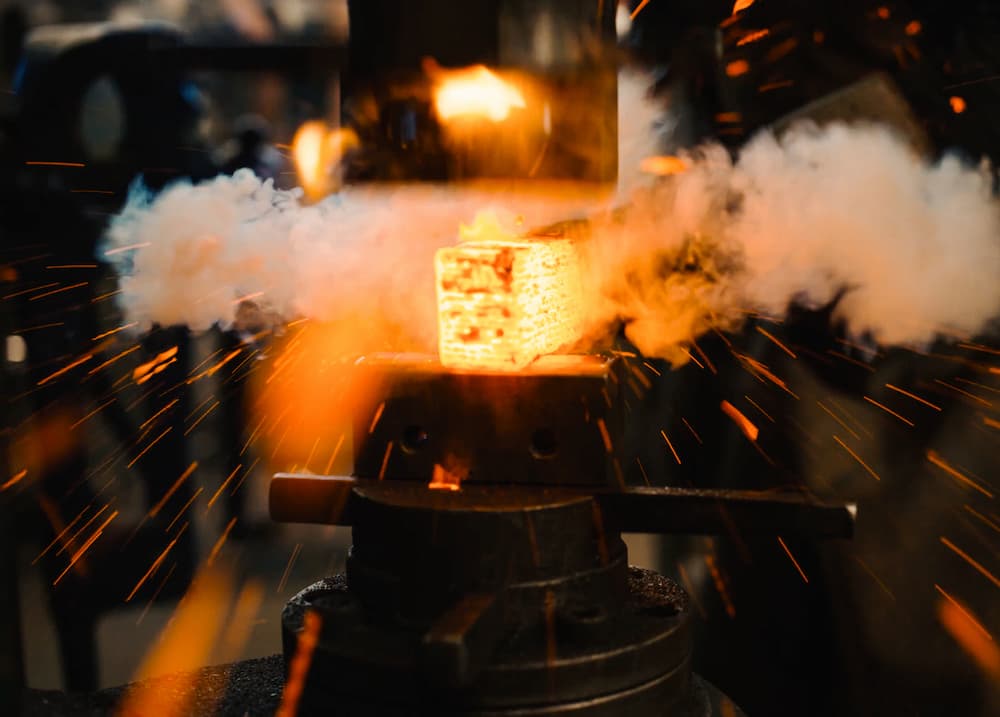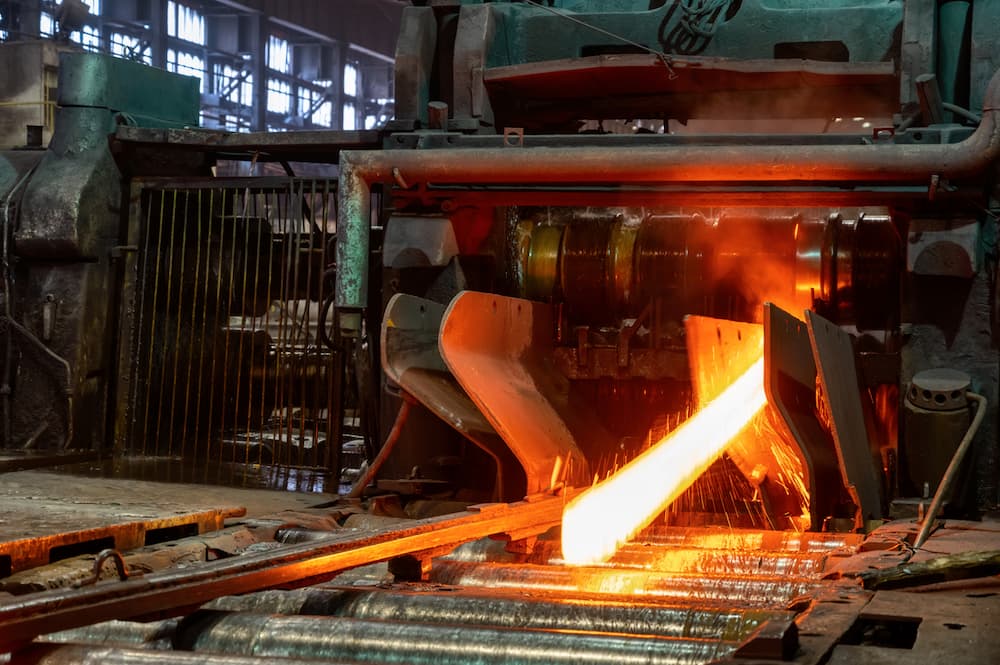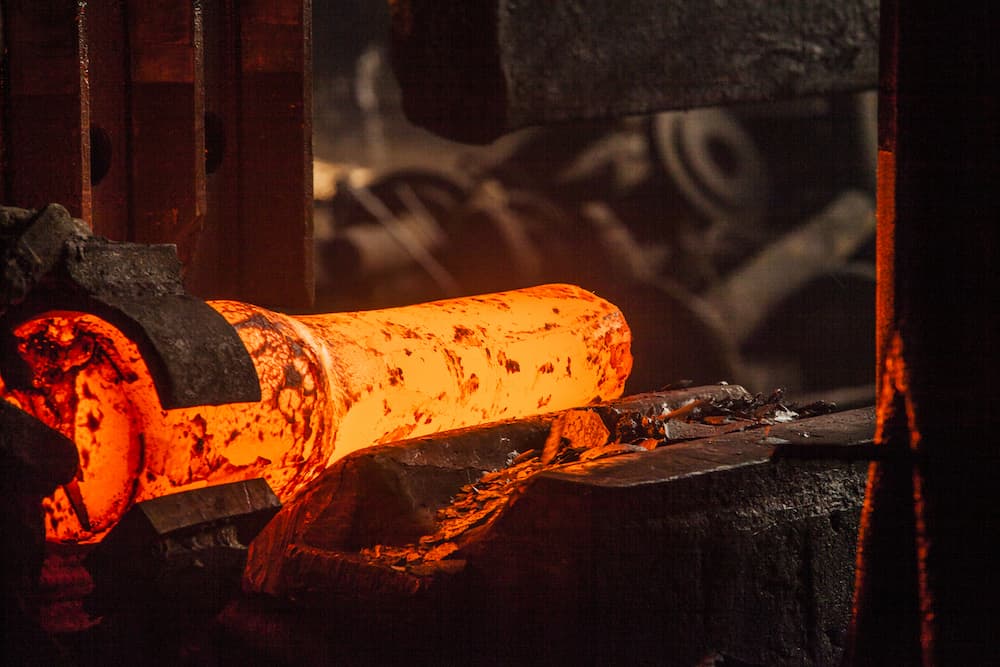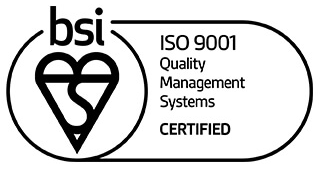The Different Types of Forging
Forging is a manufacturing process that uses heat and pressure to manipulate a metal’s form into new dimensions. Dean Group focuses on perfecting our investment casting methods, but thanks to our reliable international connections, we can supply high-quality forged items to meet our client's needs.

Forging Processes
Many tools are used in the process; Generally, large hammers will strike the material against an open die. A heavy press slowly shapes a material against a closed or open die. A belt or press will also force the material through sets of heavy rollers that reduce the original shape.
Remember, forging involves the hot metal being shaped using localised compressive forces. There are four main forging processes commonly used in manufacturing. First, the near-size billet is heated until it reaches increased plasticity. This will start the material on a permanent deformation as this process will reform it into something new. Next, the billet is formed using a number of the prepared staged tools, and when cooled, any excess material (flash) is removed. Finally, heat and surface treatments, machining and other secondary processes are added as needed.
Impression Die Forging
Impression Die (or closed die) forging uses dies that surrounds the material, making it easier to reform it into a new shape. However, this method requires greater compressive forces to ensure the material is filling the die for forming.
Cold Forging
Cold forging is used for parts that show tight tolerance dimensions and increased surface quality. Cold forging is the exception in that it doesn’t use heat. Instead, cold forging is used for part shaping at colder temperatures to produce increased tensile strength.
Open Die Forging
Open die (or smith forging) involves direct force on the material. A heavy hammer strikes create deformation on the piece held by two flat dies. The name ‘open die’ relates to the dies used as tools rather than moulds.
Seamless Rolled Ring Die Forging
For this forging, a hole is punched through a thick, round metal piece and then rolled and squeezed into a thin ring. Compared to alternative methods, seamless rolled ring forging focuses on curved dies to create this metal rings of varying sizes.

Forging vs Investment Casting
Whilst we manufacture investment castings from our facility, we don’t conduct forging from our UK foundry. Instead, we outsource our forging needs to our reputable partners, but despite that, we are fully aware of the processes used in their forging operations.
The essential differences between the two are that castings are melted, poured, and solidified. Forgings are physically forced into the desired shape whilst maintaining their solid state. At first glance, these two processes create the same results, but this isn’t true. These manufacturing processes will create vastly different characteristics in the metal, which make certain decisions vital when choosing a technique.
For example, structural integrity is significantly increased with forging and provides a high level of material predictability. Tight tolerances are achievable through castings, even designs with complexity. Your design’s product size will be a factor, as the larger the design, the more difficult it is to forge. Secondary options are usually needed more for forged products to refine them to desired specifications.
The grain flow is one of the most significant differences between these two processes. When the metal is melted during casting, the grain flow is broken. The disadvantage is that some of the original metal’s strength is lost once it solidifies. However, when forging, the grain flow is unchanged, with all its strength intact.
The best way to choose between casting and forging is by deciding your priorities regarding the previous factors. If superior strength and structural integrity are what you need, then forging is the best process. Fortunately, the expert engineers we work with are highly experienced at comparing forging against investment casting to identify the correct processes to get the best results.

Benefits of Forging
Forging manipulates materials to make them a new shape, and during this process, the internal grain structure is refined, and the physical properties are improved.
The inner structure of the metal is made up of individual crystalline areas called grains. Various factors of the material’s grain (such as size and orientation) result from the material alloy (composition) combined with the way it is formed.
Forged parts will increase ductility and provide significant resistance to impact and exposure to long-term stresses (such as fatigue loading). This is due to the forging process refining the internal elements of the metal.
Forged parts are much easier to weld than some alternative methods. In addition, working flaws are rarely found with forging as the intense working process provides high reliability for results.
At Dean Group, we make sure that our partners use staged tooling with a pre-heated, near-size billet for producing simple designs of high quality. They use a variety of ferrous and non-ferrous alloys in our forging. It is noteworthy that secondary operations are usually needed to finalise a finished part.
We pride ourselves on collaborating with companies from all over the world to find the best that provide a low-cost forging process for parts that require the highest integrity and mechanical properties.
Registered in England VAT No: 146307478 Company Registration No: 1062820




